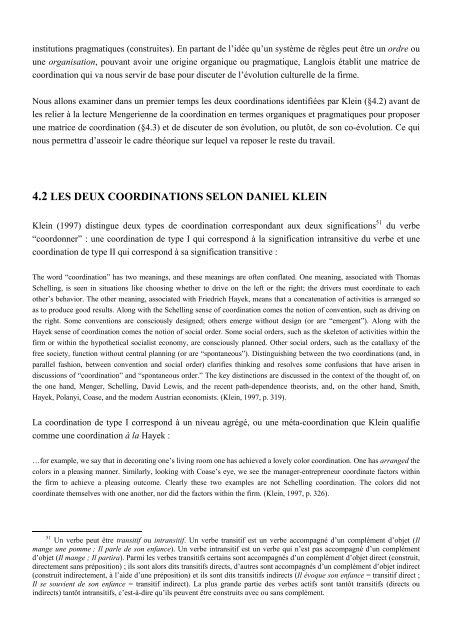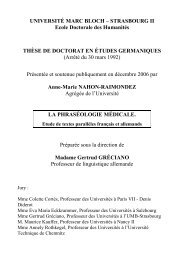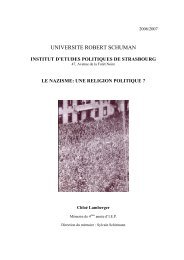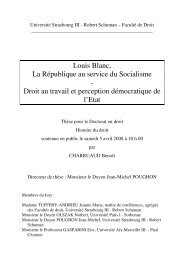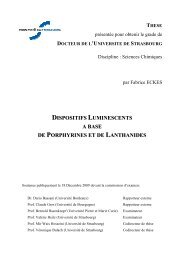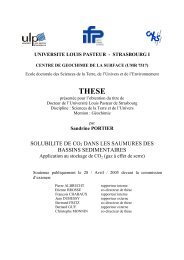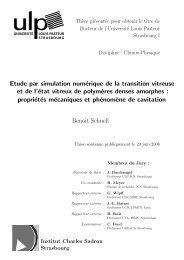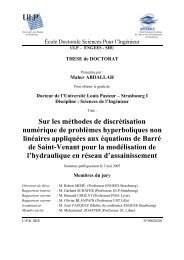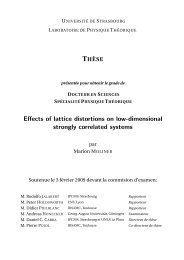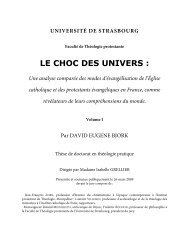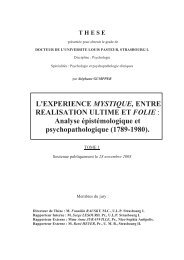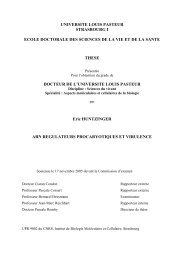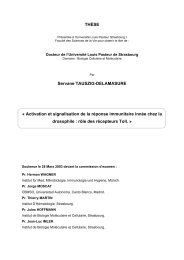Économie Évolutionniste et Culture d'Entreprise
Économie Évolutionniste et Culture d'Entreprise
Économie Évolutionniste et Culture d'Entreprise
You also want an ePaper? Increase the reach of your titles
YUMPU automatically turns print PDFs into web optimized ePapers that Google loves.
institutions pragmatiques (construites). En partant de l’idée qu’un système de règles peut être un ordre ou<br />
une organisation, pouvant avoir une origine organique ou pragmatique, Langlois établit une matrice de<br />
coordination qui va nous servir de base pour discuter de l’évolution culturelle de la firme.<br />
Nous allons examiner dans un premier temps les deux coordinations identifiées par Klein (§4.2) avant de<br />
les relier à la lecture Mengerienne de la coordination en termes organiques <strong>et</strong> pragmatiques pour proposer<br />
une matrice de coordination (§4.3) <strong>et</strong> de discuter de son évolution, ou plutôt, de son co-évolution. Ce qui<br />
nous perm<strong>et</strong>tra d’asseoir le cadre théorique sur lequel va reposer le reste du travail.<br />
4.2 LES DEUX COORDINATIONS SELON DANIEL KLEIN<br />
Klein (1997) distingue deux types de coordination correspondant aux deux significations 51 du verbe<br />
“coordonner” : une coordination de type I qui correspond à la signification intransitive du verbe <strong>et</strong> une<br />
coordination de type II qui correspond à sa signification transitive :<br />
The word “coordination” has two meanings, and these meanings are often conflated. One meaning, associated with Thomas<br />
Schelling, is seen in situations like choosing wh<strong>et</strong>her to drive on the left or the right; the drivers must coordinate to each<br />
other’s behavior. The other meaning, associated with Friedrich Hayek, means that a concatenation of activities is arranged so<br />
as to produce good results. Along with the Schelling sense of coordination comes the notion of convention, such as driving on<br />
the right. Some conventions are consciously designed; others emerge without design (or are “emergent”). Along with the<br />
Hayek sense of coordination comes the notion of social order. Some social orders, such as the skel<strong>et</strong>on of activities within the<br />
firm or within the hypoth<strong>et</strong>ical socialist economy, are consciously planned. Other social orders, such as the catallaxy of the<br />
free soci<strong>et</strong>y, function without central planning (or are “spontaneous”). Distinguishing b<strong>et</strong>ween the two coordinations (and, in<br />
parallel fashion, b<strong>et</strong>ween convention and social order) clarifies thinking and resolves some confusions that have arisen in<br />
discussions of “coordination” and “spontaneous order.” The key distinctions are discussed in the context of the thought of, on<br />
the one hand, Menger, Schelling, David Lewis, and the recent path-dependence theorists, and, on the other hand, Smith,<br />
Hayek, Polanyi, Coase, and the modern Austrian economists. (Klein, 1997, p. 319).<br />
La coordination de type I correspond à un niveau agrégé, ou une méta-coordination que Klein qualifie<br />
comme une coordination à la Hayek :<br />
…for example, we say that in decorating one’s living room one has achieved a lovely color coordination. One has arranged the<br />
colors in a pleasing manner. Similarly, looking with Coase’s eye, we see the manager-entrepreneur coordinate factors within<br />
the firm to achieve a pleasing outcome. Clearly these two examples are not Schelling coordination. The colors did not<br />
coordinate themselves with one another, nor did the factors within the firm. (Klein, 1997, p. 326).<br />
51 Un verbe peut être transitif ou intransitif. Un verbe transitif est un verbe accompagné d’un complément d’obj<strong>et</strong> (Il<br />
mange une pomme ; Il parle de son enfance). Un verbe intransitif est un verbe qui n’est pas accompagné d’un complément<br />
d’obj<strong>et</strong> (Il mange ; Il partira). Parmi les verbes transitifs certains sont accompagnés d’un complément d’obj<strong>et</strong> direct (construit,<br />
directement sans préposition) ; ils sont alors dits transitifs directs, d’autres sont accompagnés d’un complément d’obj<strong>et</strong> indirect<br />
(construit indirectement, à l’aide d’une préposition) <strong>et</strong> ils sont dits transitifs indirects (Il évoque son enfance = transitif direct ;<br />
Il se souvient de son enfance = transitif indirect). La plus grande partie des verbes actifs sont tantôt transitifs (directs ou<br />
indirects) tantôt intransitifs, c’est-à-dire qu’ils peuvent être construits avec ou sans complément.


